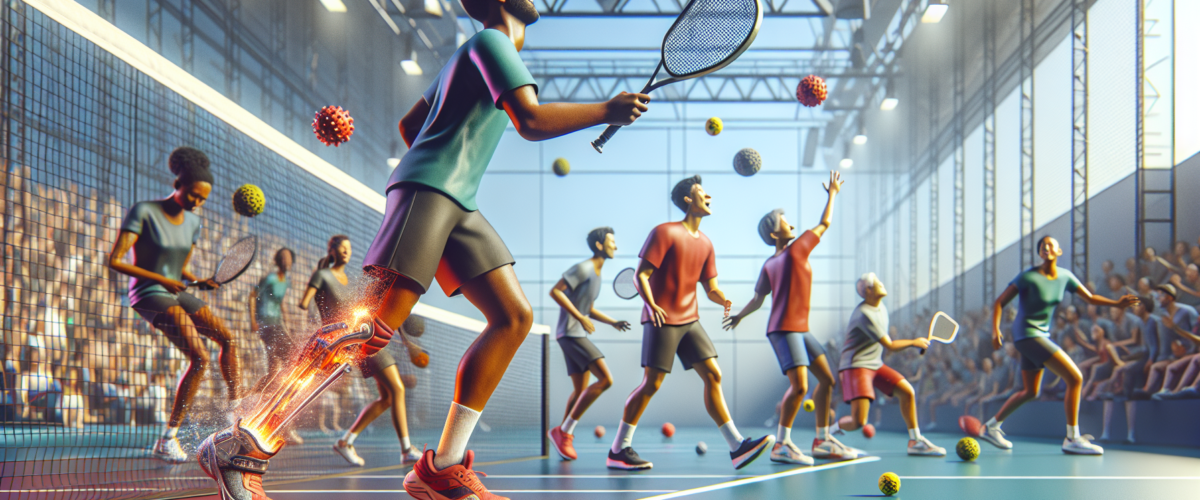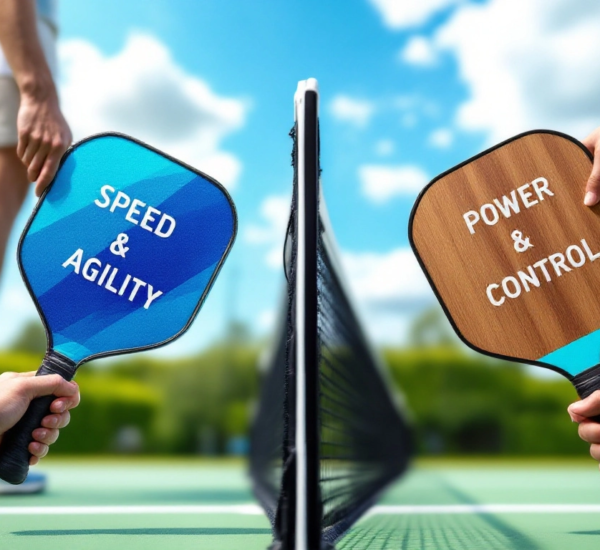Common injuries in pickleball are a growing concern as the sport continues its meteoric rise in popularity. Combining fun, strategy, and athleticism, pickleball attracts players of all ages and skill levels. However, with an increasing number of participants, there’s been a corresponding surge in pickleball injury rates. Safeguarding players through awareness and proactive habits is essential to sustaining healthy participation in the sport. This article explores pickleball injury demographics, recent studies, and practical tips to minimize the risks and promote safe play.
Table of Contents
- A Surge in Pickleball Injuries: Key Statistics and Trends
- Common Injuries in Pickleball Players
- Pickleball Injury Demographics: Age and Gender Insights
- Pickleball Injury Studies: Key Findings and Implications
- Safety Tips to Prevent Common Pickleball Injuries
- FAQs on Pickleball Injuries and Prevention
A Surge in Pickleball Injuries: Key Statistics and Trends
With millions of people now playing pickleball across the United States, the game’s rapid growth has also brought an uptick in pickleball injury rates. According to the latest USA Pickleball statistics, yearly participation has increased by double-digit percentages. Unfortunately, this expansion has corresponded with a rise in reported injuries.
Trends in Pickleball Injuries
Injury trends indicate that new players, often unfamiliar with proper techniques, are especially prone to accidents. Additionally, tournament play presents heightened risks compared to casual games, as higher levels of competition push players to their physical limits. Indoor courts can introduce hazards like slick surfaces, while outdoor courts can strain joints due to their harder playing surfaces. Being aware of these trends can help players make smarter, safer choices on the court.
Common Injuries in Pickleball Players
Pickleball’s fast-paced nature and repetitive movements can lead to several common injuries. Whether you’re a recreational player or a competitive enthusiast, understanding these injuries can help you avoid them.
Top Common Injuries in Pickleball
- Tendonitis: Often affecting the wrist or elbow due to repetitive swings.
- Ankle Sprains: Caused by quick lateral movements and abrupt stops.
- Knee Strains: Linked to dynamic pivoting and prolonged play.
- Hip Pain: Resulting from play on hard surfaces without proper conditioning.
- Shoulder Overuse Injuries: Caused by continuous overhead movements like serving or smashing.
How These Injuries Happen
Most injuries occur due to improper form, lack of warm-up exercises, or subpar equipment. For example, wearing inappropriate shoes can increase joint stress, while skipping stretches raises the risk of muscle strains. Refer to this stretching guide for effective warm-up techniques.
Pickleball Injury Demographics: Age and Gender Insights
While pickleball is often celebrated as an inclusive sport for players of all ages, different demographics experience varying injury patterns. Understanding these variations is key to targeted prevention.
Injuries by Age Group
Seniors dominate the pickleball demographic and are the most injury-prone group. Ankle sprains, joint pain, and muscle strains are particularly common among older players due to reduced flexibility and balance. Middle-aged players, on the other hand, often sustain overuse injuries as they juggle pickleball with other physical activities.
Differences Between Male and Female Players
Studies show that men are more likely to experience shoulder-related injuries due to aggressive overhead shots, while women often report knee injuries linked to anatomical differences. By tailoring their training and preparation, both groups can significantly reduce injury risks.
Pickleball Injury Studies: Key Findings and Implications
Research into pickleball injuries has revealed important trends and insights that can guide safer play behaviors. Below are some highlights:
Key Findings
Recent studies indicate that about 90% of pickleball injuries occur during active play, with roughly 30% requiring medical evaluation or intervention. Many incidents are concentrated among beginner players, emphasizing the importance of proper technique and foundational training.
What This Means for Players
These statistics highlight a clear need for conditioning and preventative strategies among players. From casual enthusiasts to tournament competitors, players can benefit from greater injury awareness and adherence to best practices.
Safety Tips to Prevent Common Pickleball Injuries
The best way to enjoy pickleball without sidelining yourself due to injury is by adopting proactive safety measures. Below are some key tips:
Injury Prevention Tips
- Warm Up Thoroughly: Spend at least 10–15 minutes on dynamic stretches and light cardio before playing.
- Choose Proper Footwear: Wear court shoes designed with good grip and cushioning to minimize strain.
- Build Strength: Incorporate leg and core exercises to improve stability and reduce the risk of injuries.
Recovery Is Key
Remember, recovery is just as critical as gameplay. Take breaks between matches, stay hydrated, and avoid overplaying to prevent chronic injuries. Additionally, professional coaching can help ensure proper technique, reducing the chances of immediate or long-term injuries.
FAQs on Pickleball Injuries and Prevention
What are the most common injuries in pickleball?
Common injuries include tendonitis, ankle sprains, knee strains, and shoulder overuse injuries caused by repetitive motions.
Are older players more susceptible to pickleball injuries?
Yes, senior players are at higher risk due to reduced balance, flexibility, and joint health. Proper warm-ups and steady conditioning can help mitigate these risks.
How can pickleball injuries be prevented?
Injury prevention involves warming up, wearing appropriate shoes, strength training, and pacing yourself during games. Personalized coaching can also help reduce risks.
Do indoor and outdoor courts impact injury rates?
Yes, indoor courts often pose slip-related risks, while outdoor courts with harder surfaces may strain joints. Choose your setting wisely and adjust your preparation accordingly.
Can new players avoid injuries?
Absolutely. Beginners should focus on learning proper techniques, investing in the right gear, and gradually building their endurance to reduce injury risks.
Conclusion
Pickleball is an exhilarating and inclusive sport, but being aware of common injuries and pickleball safety statistics is vital for long-term enjoyment. By focusing on basic safety measures like warming up, wearing appropriate footwear, and embracing strength training, players can reduce pickleball injury rates and continue to thrive on the court.
Have you personally dealt with pickleball injuries? Let us know your experience in the comments below, or check out our guide on pickleball injury prevention for additional tips. Stay safe and enjoy the game!




